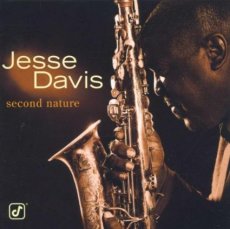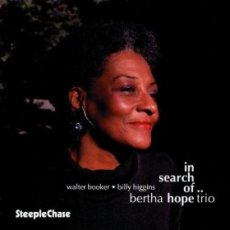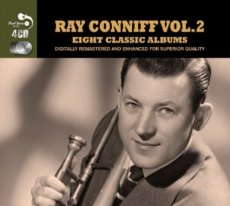
Daily Dose Of Jazz…
Jesse Davis was born on November 9, 1965 in New Orleans, Louisiana and showed signs of musical talent at a very young age. When he was eleven, his brother Roger, an accomplished tuba player bought Jesse a saxophone and taught him how to play it. He went on to study with Ellis Marsalis, whose teachings inspired him to become a music student at North-Eastern Illinois University on a full scholarship. He eventually transferred to William Patterson College in New Jersey, then to the New School in New York City, enrolling in their Jazz and Contemporary Music Program under the tutelage of Ira Gitler.
After graduating, alto saxophonist Jesse Davis embarked on a productive jazz career and has recorded eight albums on the Concord Jazz label. He has collaborated with such artists as Jack McDuff, Major Holley, Cecil Payne, Jay McShann, Cedar Walton, Benny Golson, Illinois Jacquet Kenny Barron and Roy Hargrove amongst a long list of notables.
Davis has received a “Most Outstanding Musician award” from magazine, won several awards at jazz festivals for outstanding soloist, toured Europe several times fronting his quartet and a member of the Sax Machine and made his debut as an actor in the celebrated Robert Altman movie “Kansas City”.
Jesse was equally influenced by Charlie Parker, Cannonball Adderley and Sonny Stitt and contributes a flawless technique and a natural feeling for the blues to every one of his performances as he continues to perform, record and tour.
More Posts: saxophone

Hollywood On 52nd Street
It Might As Well Be Spring has been a classic jazz favorite for many years but it didn’t start out that way. It was a song taken from the 1945 film State Fair with music by Richard Rodgers and lyrics by Oscar Hammerstein II. It won the Academy Award for Best Original Song and was part of the only original film score.
Jeanne Crain, who played Margy Frake, sang the song in the film, but was dubbed by Louanne Hogan. Dick Haymes, who portrayed the original Wayne Frake, made the first hit recording of the song, followed by Frank Sinatra, Sammy Kaye, Paul Weston, Margaret Whiting, Shirley Bassey, Ella Fitzgerald, Sarah Vaughan, Blossom Dearie, Nina Simone, Brad Mehldau and Jane Monheit.
The Story: Love, romance and competition take center stage as the Frake family sets off for the state fair. Margy is melancholy and looks forward to the break in routine. Father Abel is excited about entering his prize pig Blue By for the ribbon and bets his neighbor. Mother is entering the cooking competition with her pickles and mincemeat recipes. Brothe Wayne is left forlorn by his girlfriend’s inability to go with him.
At the fair all the romances take a different turn of occurrences and lucky beaus end up with new ladies, Blue Boy wins in all his categories thanks to his lady love Esmeralda, and it’s a happily ever after story ending.
Sponsored By
www.whatissuitetabu.com

Daily Dose Of Jazz…
Bertha Hope was born Bertha Rosemond on November 8, 1936 and raised in Los Angeles, California. At age three she began studying classical piano and at a young age she was playing and learning from other young musicians in her neighborhood such as Richie Powell and Elmo Hope. Hope attended Manual Arts High School, performed in numerous nightclubs around town and went on to study piano at the Los Angeles Community College, finally receiving a B.A. in early childhood education from Antioch College.
In 1957 she married Elmo and relocated to the Bronx, New York, working at the telephone company during the day and performing at night. After her husband’s passing ten years later, Bertha continued to present his music and remained an active force in improvised music within the New York jazz scene. Her second husband, Walter Booker Jr., worked with her to keep the music of Elmo Hope alive through their tribute ensemble called “ELMOllenium” and The Elmo Hope Project.
The composer and arranger has recorded for Steeplechase, Minor and Reservoir record labels, has toured extensively through Japan, plays with the group, Jazzberry Jam in addition to leading The Bertha Hope Trio with Walter and Jimmy Cobb and has taught an advanced jazz ensemble at the Lucy Moses School in NYC, and an introduction to jazz program at Washington Irving High, sponsored by Bette Midler.
More Posts: piano

Daily Dose Of Jazz…
René Marie was born René Marie Stevens on November 7, 1955 in Warrenton, Virginia. With the encouragement of her children, the jazz vocalist and songwriter started her professional musical career in 1997 at the age of 42.
Performing at Washington D.C.’s Blues Alley in 1999, René signed with the MaxJazz label out of St. Louis and released four albums to critical acclaim and her sophomore project “Vertigo” received a coronet ranking by the “Penguin Guide to Jazz”, a distinction given to less than 85 other recordings in jazz history.
Her work often combines contrasting songs such as “Dixie” and the anti-lynching “Strange Fruit” on Vertigo or Ravel’s Bolero with Leonard Cohen’s Suzanne” on Live at Jazz Standard.
Attracting controversy and national attention in 2008, René substituted the lyrics of “The Star-Spangled Banner” with “Lift Every Voice and Sing” when invited to sing the national anthem at a civic event in Denver. This arrangement of the national anthem forms part of the titular suite of Marie’s 2011 CD, “The Voice of My Beautiful Country” on the Motema Music label.
René Marie specializes in writing her own music, and she comments on the fact that this is not the norm in jazz in one of her songs, “This for Joe,” after a club manager who got mad at her for singing originals. Her 8th release, Black Lace Freudian Slip, maintains the tradition.
She followed that project by steering away from tradition with a rare tribute album to Eartha Kitt, her latest titled “I Want To Be Evil”. Vocalist Rene Marie continues to record, perform and tour worldwide.
More Posts: vocal

Daily Dose Of Jazz…
Joseph Raymond Conniff was born on November 6, 1916 in Attleboro, Massachusetts, learned to play trombone from his father and learned music arranging from a course book.
Post World War II he joined the Artie Shaw big band writing many of his arrangements. Hired by Mitch Miller, head of A&R at Columbia Records, Ray became the house arranger. During this period he worked with Rosemary Clooney, Johnny Mathis, Frankie Laine, Marty Robbins and Johnny Ray among others. In 1955 Ray wrote a top 10 arrangement for Don Cherry’s “Band of Gold” that sold more than a million copies.
From 1957 to 1969 Conniff arranged and recorded as a leader and sideman for Columbia and their subsidiary label Epic, became a bandleader and had 28 albums in the American Top 40, created the Ray Conniff Singers, toured Europe, was the first American popular artist to record in Russia and stepping out of his element he produced a couple of light jazz albums sans vocals.
Conniff’s most famous album was his 1966 release of “Somewhere My Love” written to the tune Lara’s Theme from the 1965 film Dr. Zhivago. It featured the 12 female and 13 male Ray Conniff Singers. The album went platinum, hit the top of the American and European charts and grabbed a Grammy Award.
The next three decades were equally lucrative for Ray recording mainly out of Los Angeles and finding fame touring Latin and South America. He recorded an average of two instrumental and one vocal album a year and sold over 70 million albums worldwide. He continued to record and perform until his death on October 12, 2002 in Escondido, California.
More Posts: trombone



